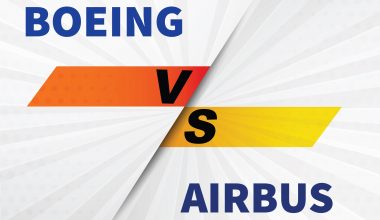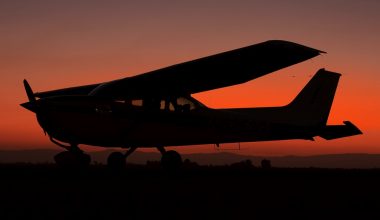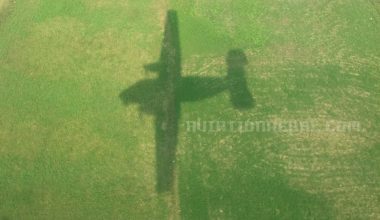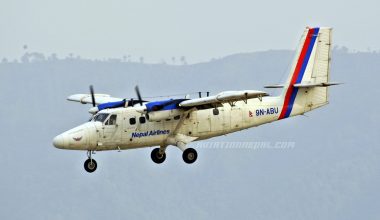Thai Airways International Flight 311 was en route from Bangkok, Thailand’s Don Mueang International Airport to Tribhuvan International Airport Kathmandu, Nepal on 31st July 1992, Friday an Airbus A310-304 on the route with registration ‘HS-TID’ crashed on approach to Tribhuvan International Airport.
Thai Airways Flight 311 was on IFR (Instrument Flight Rules) and was heading to Sierra (VOR/DME) approach to runway 02 at Tribhuvan International Airport. At that time the crew encountered a flap malfunction during the approach which forced the crew to divert the aircraft to the nearest airport (Calcutta Airport) with the longer runway. Shortly after 21 seconds at the direction of 12 nm from Kathmandu VOR, the flaps were again back to the normal operating conditions. The crew did not decide to continue the straight approach due to the steep descent angle position of the aircraft.
The pilot then requested the control tower at Kathmandu to start their approach again by turning back to the Romeo point which is 41 nm South south-west (202 radial) of the Kathmandu VOR. The Controller from the non-radar facility tower at TIA allowed the crew to make the Sierra Approach, starting at the 202 radial and 16 nautical miles from the VOR. The crew then responded that they couldn’t land and again asked for left turn back to Romeo and initiated the approach back again.
Later the traffic controller had requested to make a left turn but the crew unintentionally initiated to right from the aircraft’s 025 degree heading and commenced a climb from an altitude of 10,500 feet to FL180 when the flight was about 7 nm south of the Kathmandu VOR. The crew informed ATC that they were ascending. The tower on the other hand requested flight 311 to report after reaching 16nm from Sierra. During the turn there was more conversation carried between the tower controller and thecrew of the flight that where it was established that the aircraft was to maintain an altitude of FL115 and was to “proceed to Romeo” and contact the Area Control Center (ACC) controller.
The flight start to descent during the complete turn of 360-degree turn, some moment later the aircraft was rolling out on headings of 045 and 340 degrees and again was proceeding towards the north on a heading of 025 degrees magnetic. Finally the crew again contacted Kathmandu tower when the aircraft was 5 nm south-west of the Kathmandu VOR, the traffic controller from the tower instructed the aircraft was “heading 025” and they wished to proceed to Romeo to start their approach again; adding they had “technical problems concerned with the flight.” It was again established that the flight was to proceed to Romeo and the crew agreed to “report over Romeo.”
All the data fetched from the cockpit voice recorder (CVR) explains that the crew were in the process of inserting “Romeo” and other related navigational information in the Flight Management System, but was experiencing difficulties. The flight continued towards the north on a heading of 025 degrees and then, at about 16 nm to north, the heading was altered to the left by 005 degrees. Slightly over one minute later, the Ground Proximity Warning System (GPWS) sounded the warning “terrain” “terrain” followed by”whoop whoop pull-up”; the aural warning continued until cathasthropic incident happened approximately 16 seconds later. Engine thrust was increasing and “Level Change” had been announced on the cockpit, just before the impact occurred at the 11,500-foot level of a 16,000-foot peak; the accident site was located on the 015 radial (north-north east) at 23.3 nm from the Kathmandu VOR.
PROBABLE CAUSE FOR THE CRASH:-
The Flight Probable Cause for Flight TG311was the flight crew which unintentionally allowed the flight to continue to move in the wrong direction, in that the TG311 crew never provided the aircraft’s VOR radial when stating DME and thus the controller never solicited this information by which the aircraft’s position was not transmitted at any time.
Contributing factors were: the misleading depiction of Romeo on the operator’s approach chart used by the flight crew; a flap fault, although corrected, required that the initial approach to be discontinued; and radio communication difficulties between the TG311 crew and the air traffic controllers that stemmed from language difficulties and ineffective discussion of apparent unresolved problems.”
It was the first fatal accident of the aircraft type A310 in the history. The flight number since the accident has been re-numbered to 319 for the outbound flight and 320 for the flight back to Bangkok. The aircraft crashed into the side of a mountain 37 kilometers miles north of Kathmandu at an altitude of 11,500 feet and at a ground speed of 300 nautical miles which resulted to kill all 99 passengers and 14 crew members.









